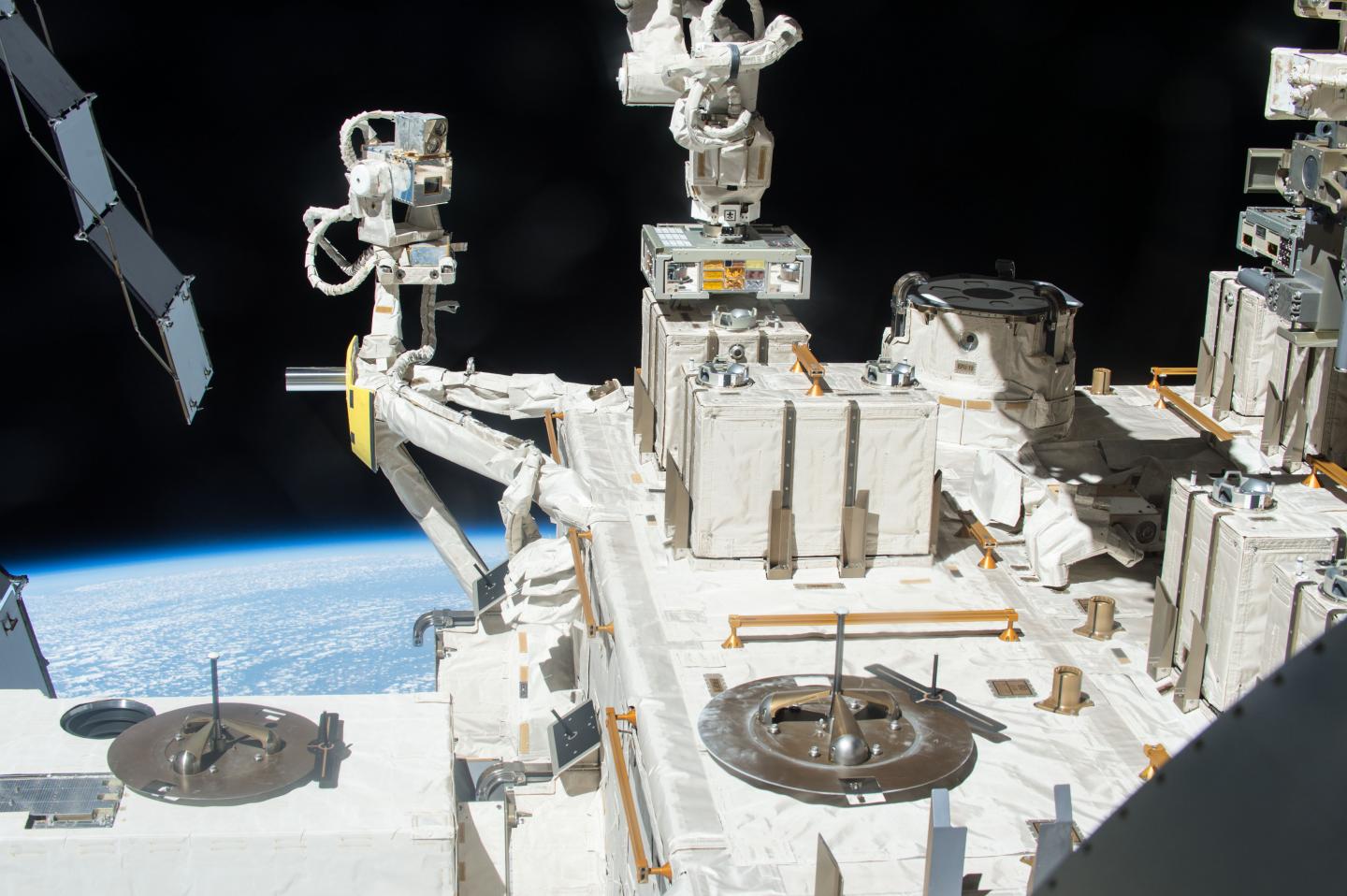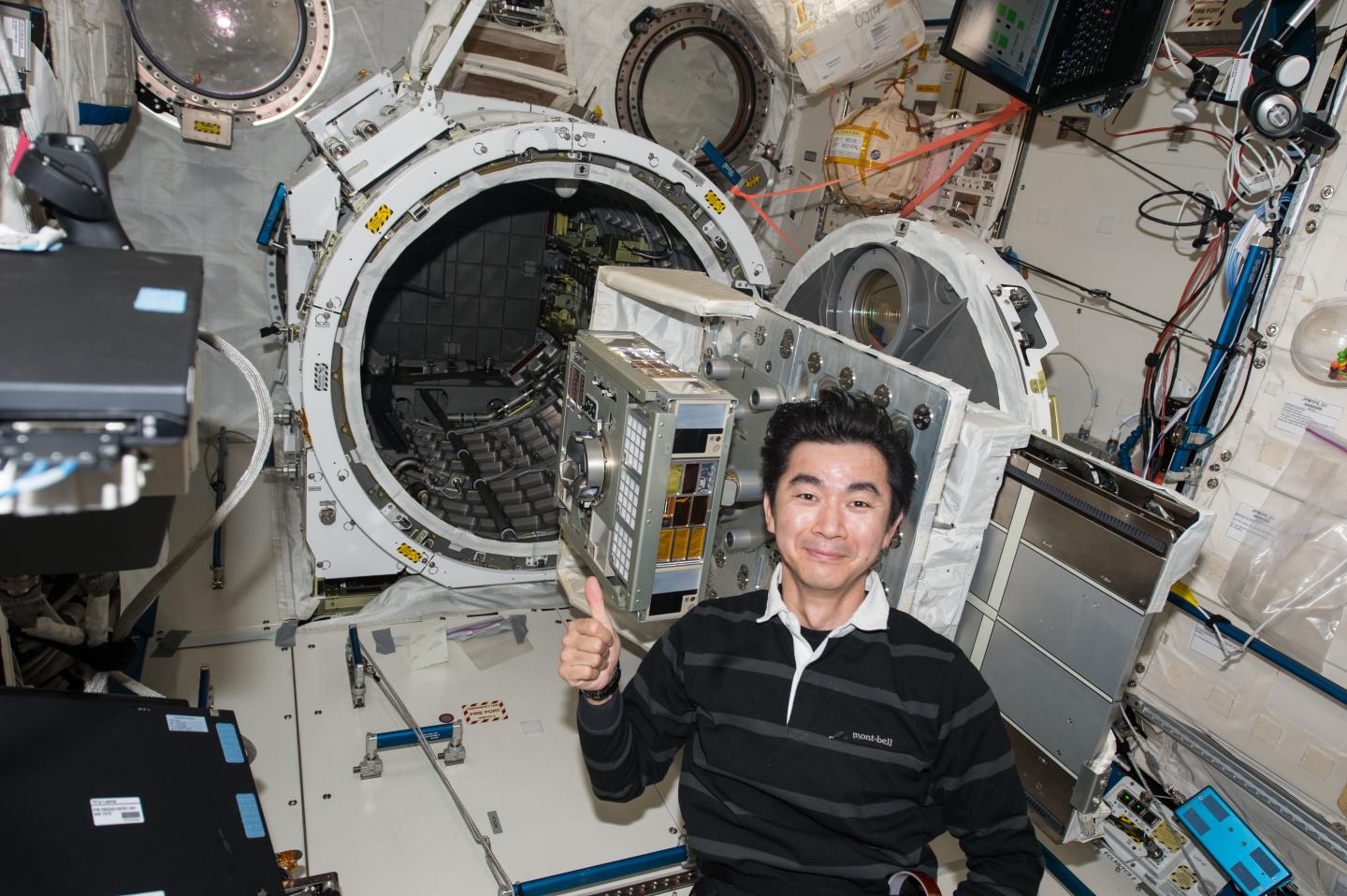Panspermia: colonies of bacteria can survive in interplanetary space
Deinococcus radiodurans is one tough bacterium. Neither the detonation of atom bombs nor the terrors of empty space bother it. But could it travel from planet to planet as a stowaway? Imagine microscopically small lifeforms being transported through space and landing on another planet. Bacteria that find suitable conditions for their survival on the new planet could then multiply and spawn life on the other side of the universe. This theory, which is known as “panspermia,” postulates that microbes could travel between planets and spread life throughout the universe. Panspermia has been debated for a long time, because it obviously requires that bacteria survive long trips in space, withstanding vacuum conditions, temperature fluctuations, and radiation.
“The origin of life on Earth is the greatest mystery of humankind. Scientists have taken completely opposite viewpoints on this topic. Some think that life is very rare and developed only once in the universe, while others believe that life can develop on any suitable planet. If panspermia is possible, life must be much more common than we thought before,” says Dr. Akihiko Yamagishi, professor at the University of Pharmacy and Life Sciences in Tokyo and lead researcher of the Tanpopo space mission.
In 2018, Dr. Yamagishi and his team tested for the presence of microbes in the Earth’s atmosphere. Using an airplane and scientific balloons, the researchers found deinococcus bacteria floating 12 km above the Earth. Deinococcus bacteria was already known for forming large colonies (greater than a millimeter in size) and for being resistant to environmental dangers, such as UV radiation, but could it also survive in space long enough to support the possibility of panspermia?
To answer this question, Dr. Yamagishi and the Tanpopo team tested the survival of radiation-resistant bacteria in space. The study, which has now been published in Frontiers in Microbiology, shows that thick layers can provide adequate protection to allow bacteria to survive several years in the harsh conditions of space. Dr. Yamagishi and his team came to this conclusion after placing layers of dried deinococcus in exposure plates outside the International Space Station (ISS). The specimens had different thicknesses and were exposed to the conditions of outer space for two or three years and then tested for survival.
After three years, the researchers determined that all layers with a thickness of greater than 0.5 mm survived at least partially under the conditions of outer space. Observations indicate that the bacteria on the surface died, but this created a protective layer for the bacteria underneath and ensured the colony’s survival. Based on the survival data from one-, two-, and three-year exposure times, the researchers estimate that a pellet with a thickness of greater than 0.5 mm could survive between 15 and 45 years on the ISS. The experiment’s design allowed the researchers to extrapolate and predict that a colony with a diameter of 1 mm could possibly survive for up to 8 years under the conditions of outer space.
“The results indicate that radiation-resistant deinococcus could survive the trip from Earth to Mars and vice versa, which takes several months or years on the shortest path,” says Dr. Yamagishi.
This study provides the best estimate to date for the survival of bacteria in space. While earlier experiments proved that bacteria could survive for long periods of time if protected by rock (i.e., lithopanspermia), this is the first long-term study in space that indicates the possibility that bacteria could survive in space in clumps, generating the new concept of “massapanspermia.” While this study might be one step closer to verifying panspermia, the actual transmission of microbes is also subject to other processes, such as the “launch” (for example, by a meteor impact that flings matter into space) and the landing on the destination planet, and it still must be determined if bacteria could survive these events.

